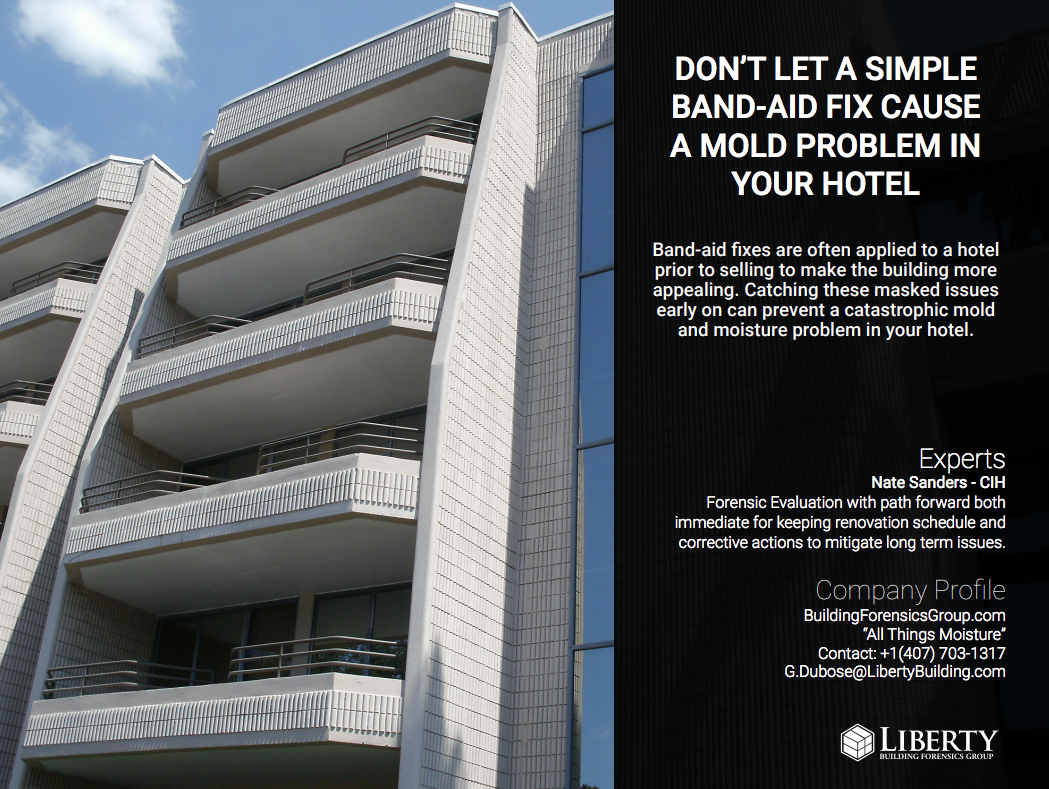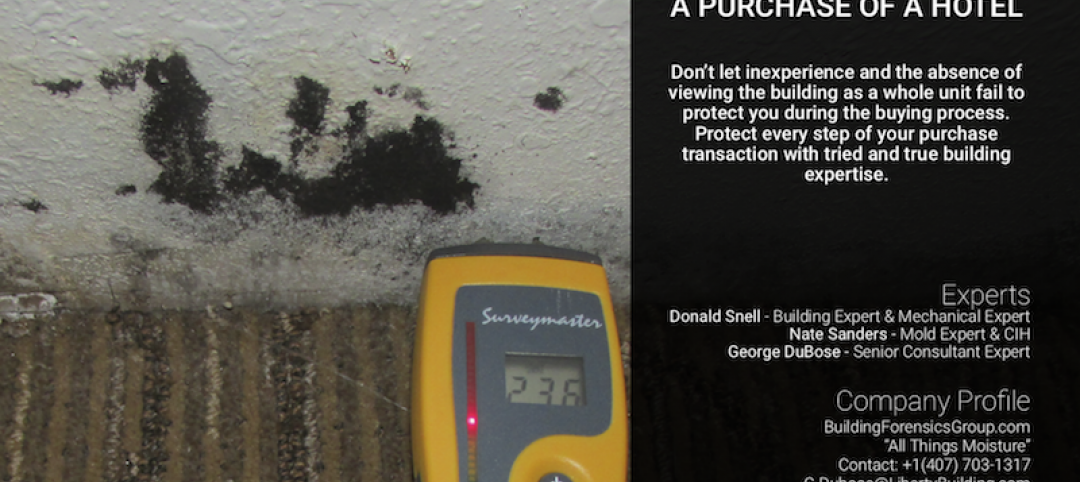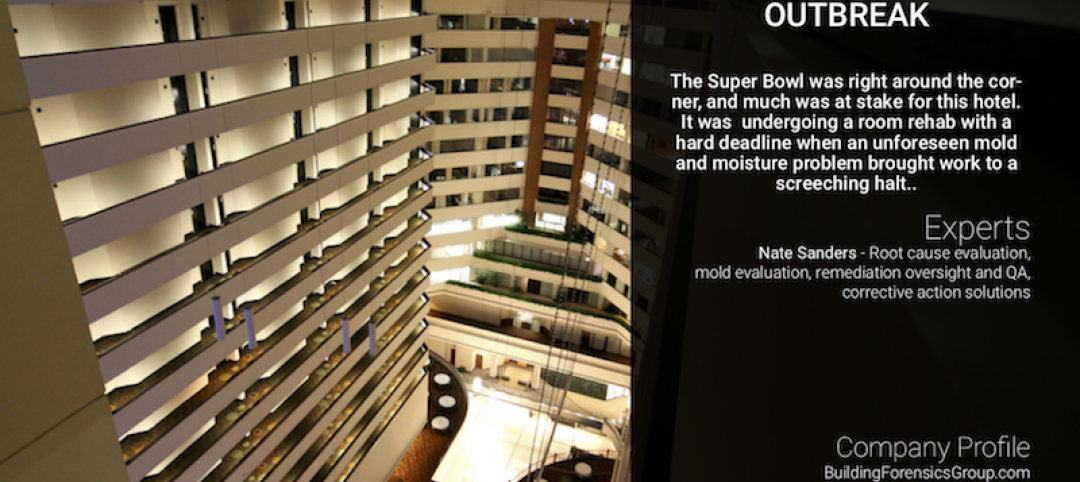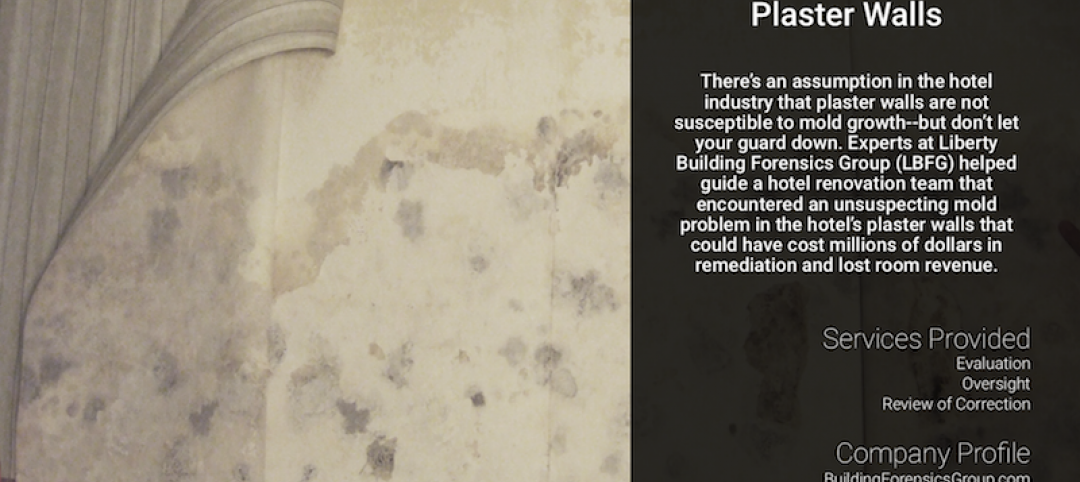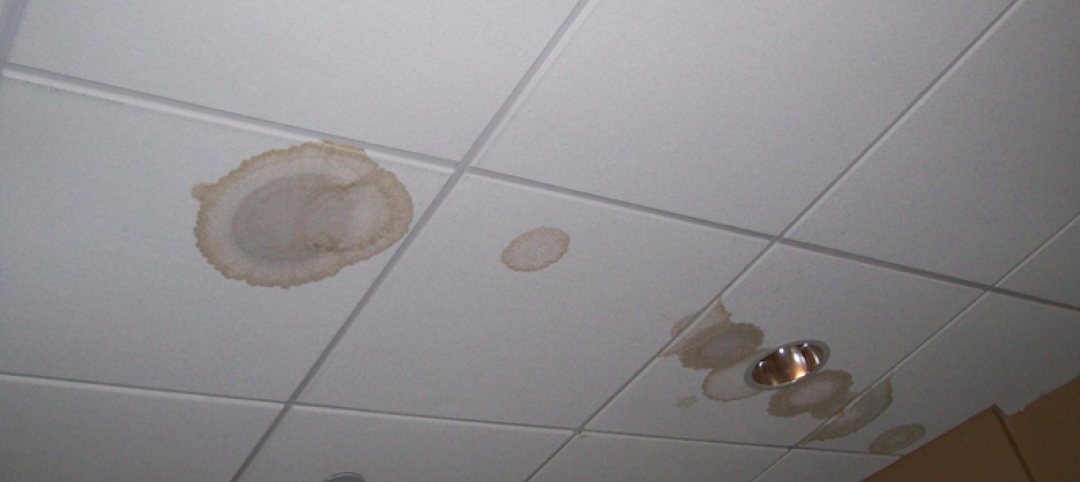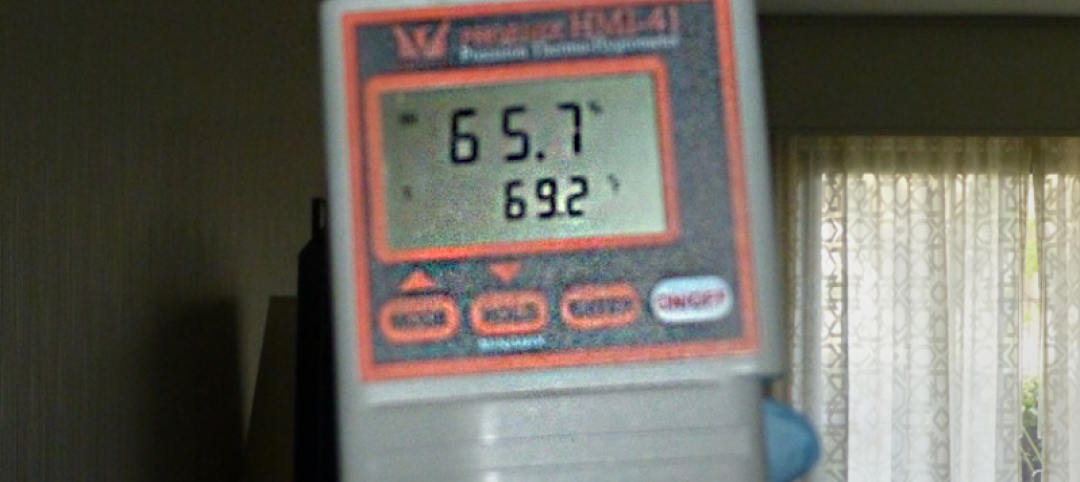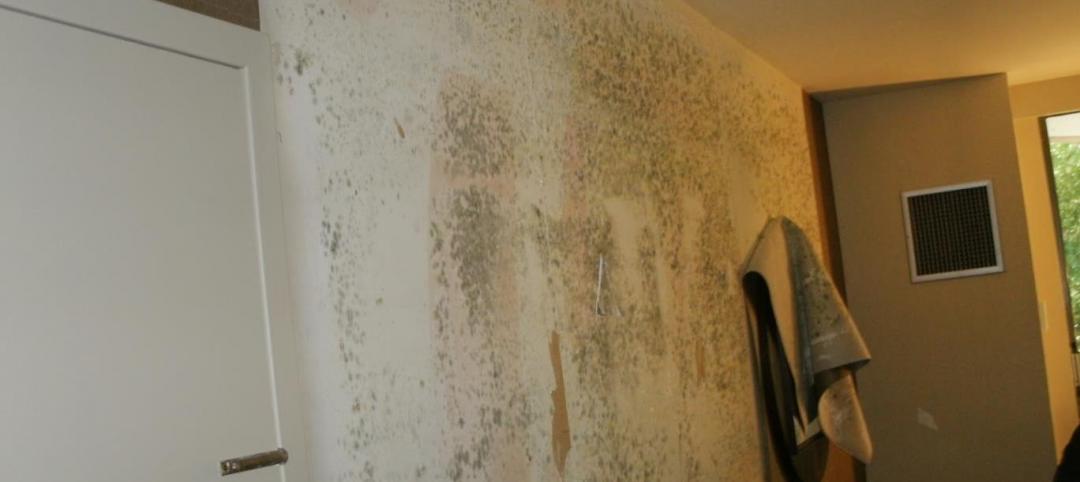A mid-rise hotel in Tampa, Florida had recently undergone a sale. The new owner, who was changing flags, was updating the Furniture, Fixtures, and Equipment (FF&E) to meet the brand standards for the new flag. This 400+-room hotel, located in a commercial district of Tampa, was fairly basic in design, with a corporate feel. Though there were no major influential factors present that would elevate the probability of a mold and moisture problem (such as being located next to a large body of water), the hotel was unexpectedly impacted by a severe mold problem behind new vinyl wall covering (VWC) during the renovation process.
What makes this particular case study so interesting is the fact that the Property Condition Assessment (PCA) had not detected any mold in the building, nor had the construction team observed any mold as renovations began. The mold was only discovered after the new VWC had been installed. Ironically, even though the mold growth was new, the root cause of the problem could be traced back to a decision made just prior to the purchase.
The mold problem was introduced during the first renovation phase, in the first wing of the first floor. Within a week of the walls being finished with a skim coat and new VWC, mold was found growing behind the new vinyl. This was a bewildering development, as there had been no mold issues up until this point, and the construction team had followed the manufacturer’s guidelines for the drying and installation of the new finishes. The general contractor had worked with Liberty Building Forensics Group (Liberty) many times before, and didn’t hesitate to request our services, knowing that we could solve this problem quickly. Liberty understood the urgency of a hotel renovation schedule and the threat that extended room outages posed and promptly responded to the distress call by beginning an investigation.
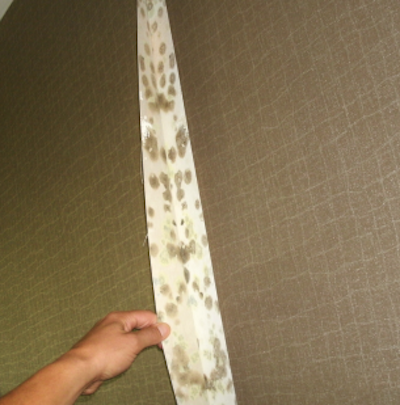 Even though the mold growth was found behind the newly installed VWC the root cause could be traced back to a decision made just before the purchase of the hotel.
Even though the mold growth was found behind the newly installed VWC the root cause could be traced back to a decision made just before the purchase of the hotel.
CHALLENGE
Liberty was under pressure to quickly solve the problem so that it would not progress when the construction team moved to the next floor, thereby increasing costs for the client due to unanticipated remediation efforts and extended room outages. We began by looking at the HVAC system. By examining the vertical air conditioning (VTAC) units in each of the guest rooms, we were able to trace the duct to the outdoor air intake, but then couldn’t find where the outdoor air was brought into each of the guest rooms from the exterior.
Although this hotel’s mold problem had been caused by a simple mistake, it had evolved into a complex issue through a series of events.
Through conversing with the owner and the general contractor, Liberty learned that the exterior of the building had been given a paint job by the previous owner prior to the hotel sale. In doing so, the painting contractor had painted over the old louvered screens. Though this action had been requested by the previous owner to make the building look more appealing, the screens were in fact how the outdoor air was introduced into each of the guest rooms. The paint had sealed the screens shut and altered the amount of outdoor air coming in, thus causing the vents to no longer meet the design requirements for the VTAC unit. This design change was causing the now-oversized units to short cycle, dropping the temperature very quickly without adequately dehumidifying the rooms.
The general contractor, wall-prep contractor, and vinyl contractor had carried out their usual processes of skimming the wall, allowing three days to dry, then continuing with VWC installation. Due to the increased humidity, however, the skim coat did not dry within the manufacturer’s normal recommended dry time. The typical three days recommended by the manufacturer meant under conditions where the hotel was operating at 50 percent humidity and 75℉. Instead, the hotel was now operating closer to 70 percent humidity and 75℉, making three days of dry time insufficient. As a result, the moisture from the undried skim coat was closed in by the new vinyl wall covering, creating an environment that was very conducive for mold growth.
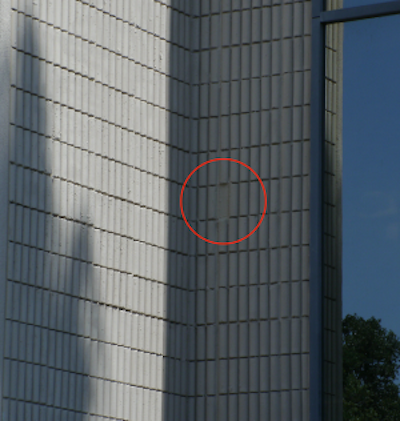 The recent paint project had sealed the outdoor air vents to the VTACs causing toilet exhaust-induced air infiltration to enter the room and wall cavity directly and wash behind the newly installed VWC.
The recent paint project had sealed the outdoor air vents to the VTACs causing toilet exhaust-induced air infiltration to enter the room and wall cavity directly and wash behind the newly installed VWC.
SOLUTION
Liberty temporarily deployed supplemental dehumidifiers to allow the construction team to continue with their three-day planned work schedule. Meanwhile, we conducted further evaluations to determine whether the blocked vents were the only issue causing the mold problem. We were able to confirm that, in fact, this change to the original design was the only causative issue. The previous owner’s decision to paint the screens rather than replace them had led to a mold problem that could have been catastrophic for this new owner if the mold had not been detected early on in the renovation process.
The options for long-term solutions that LBFG provided were quite simple: either introduce new equipment to pressurize the corridor in order to provide the proper dehumidification, or return to the original building design by fixing the vents. The new owner opted for the easier and less expensive option by fixing the exterior vents and restoring the building back to its original design.
RESULT
Although this hotel’s mold problem had been caused by a simple (though amateur) mistake, it had evolved into a complex issue through a series of events. Fortunately, due to the pre-existing relationship that the general contractor had with Liberty, we were able to get involved as soon as the mold made its appearance, and addressed the issue before it got out of control. This kept the renovation project moving forward on schedule and prevented any future mold outbreaks.
Liberty Building Forensics Group is committed to SOLVE. FIX. PREVENT. RECOVER the world’s most complex building mold and moisture failures. Our firm has project experience in the U.S., Canada, Mexico, the Caribbean, Central America, the Middle East, Southeast Asia, and Europe. Contact us at g.dubose@libertybuilding.com or by phone at 407/467-5518 or visit us at http://www.buildingforensicsgroup.com/.
.png)
More from Author
Richard Scott-AIA, NCARB, LEED AP of Liberty Building Forensics Group | Mar 1, 2019
How to protect yourself from hidden mold problems during a purchase of a hotel
Don’t let inexperience and the absence of viewing the building as a whole unit fail to protect you during the buying process. Protect every step of your purchase transaction with tried and true building expertise.
Richard Scott-AIA, NCARB, LEED AP of Liberty Building Forensics Group | Jan 28, 2019
Hotel renovation for the Super Bowl halted due to mold outbreak
The Super Bowl was right around the corner, and much was at stake for this hotel. It was undergoing a room rehab with a hard deadline when an unforeseen mold and moisture problem brought work to a screeching halt.
Richard Scott-AIA, NCARB, LEED AP of Liberty Building Forensics Group | Jan 21, 2019
Hotel renovation threatened due to unexpected mold on plaster walls
Mold growth is not seen as frequently on plaster walls as it is on gypsum wallboard, primarily because there are no nutrients to support mold growth.
Richard Scott-AIA, NCARB, LEED AP of Liberty Building Forensics Group | Jan 14, 2019
Air barriers: Expectations vs. reality
When new building code requirements require high performance and innovation incentives, such as those found in green building rating systems, significant confusion and some building failure will ensue.
Richard Scott-AIA, NCARB, LEED AP of Liberty Building Forensics Group | Nov 20, 2018
Monitor these 9 vital signs to avoid widespread mold & moisture problems in your building
Many building owners and operators rely solely on a property condition assessment (PCA) to determine if they have a problem.
Richard Scott-AIA, NCARB, LEED AP of Liberty Building Forensics Group | Jul 13, 2018
Hotel renovation: More than just minding the dust
Do you know the vital signs for avoiding moisture & mold problems? Will your brand standards cause you headaches? How will you recover costs if you do get into trouble?

